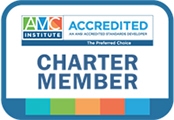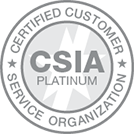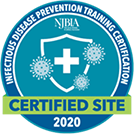Whether you work for a stand-alone association or are part of an association management company, all association professionals can likely relate to some level of frustration when it comes to selecting, utilizing and maintaining their association management system (AMS).

1. We don’t think or talk the same
AMS professionals are good at what they do – programming. They are not membership coordinators or executive directors. They don’t use terminology like member engagement or retention. They use terminology like customer IDs, paid through dates, activity codes and attribute fields.
It seems at times that the association staff are from a completely different planet than the AMS technology team. And look, it’s not anyone’s fault. It takes a very special and unique skill set to be able to program software just as it does to manage an association.
Let’s acknowledge and understand these differences right up front so we can work to overcome the challenges they present.
2. They don’t understand the unique challenges we face as association professionals
Don’t get me wrong, AMS providers are eager to listen and try to incorporate improvements to their software based on customer needs. This is not meant to be a criticism.
However, AMS providers including the engineers and developers who write the programming and provide technical support to association professionals, do not understand the nuances of working with a non-profit board of directors. They don’t know what it’s like to try and explain the need for customization to an out of the box system to board members who may not understand why it’s not already included in the standard functionality or why it costs so much.
They don’t handle the daily calls from members who don’t know how to reset a password or are too busy in their professional lives to read a lengthy email on how to renew their membership dues online.
They also don’t have to deal with members who want an Amazon experience on an association shoestring budget.
3. We don’t understand the way AMS providers have to operate their business
Just as AMS providers aren’t association management professionals, we don’t always get why the AMS vendors have to operate the way they do.
For example, there’s a ticketing system for a reason. No, we can’t just call up the AMS vendor and have them spend 12 hours setting up a new program without paying for their time. When we enter tickets for the AMS provider to troubleshoot an issue, do we provide them with the actual information they need to replicate the problem we’re having or do we send a generic SOS and expect them to read our minds and know what we are asking? Do we recognize that out of the box software means just that and if we need additional functionality or programming that it will cost more money down the road?
Believe me, I’ve been there and done that when it comes to dealing with these challenges and experiencing these common frustrations firsthand. So how do we bridge the gap between these two worlds to make sure that we get an AMS that meets our needs and is utilized to its maximum potential?
Here are just a few quick tips based on my own experience…
1. Before selecting the AMS, talk to other associations

AMS provider sales folks can tell you that their software can do x, y and z, but it doesn’t always translate into exactly what you are hoping it will do. Ask for references and talk to other associations who utilize the AMS so that you can get the real-world association management professional’s view of the AMS, both the good and the bad.
2. Allocate dedicated staff time for working with the AMS provider
In an ideal world, you select an AMS provider via an RFP process sign a contract and off you go with a brand new fantastic AMS. That is not reality.
Your association has to have a dedicated staff person who fully understands your association’s business rules and member experience to work side-by-side with the AMS provider. This requires a special skillset to be able to translate the language of the association world into the tech talk of the AMS world. This person will be vital to ensure that the functionality provided truly meets the needs of your association and members.
Build hours into your staffing plan to ensure that resources are allocated to test functionality, submit tickets when there are issues, oversee the status of AMS upgrades and projects and to cross-train other staff members on how to use the AMS.
3. Review and document your business rules with the AMS provider
Every association is different. Some have company memberships vs. individual memberships or both, some manage certification programs tied to membership, some renew membership on anniversary vs. calendar date, etc.
It is of vital importance that you document and walk through your association’s business rules with the AMS provider during the requirements gathering phase and before going live with the new system. If the AMS provider does not have a good handle on the specific requirements for your association, they cannot ensure that the functionality will meet your needs. You don’t want to jump into a new AMS and learn six months later that you now have to add some new customization to deliver an important aspect of your business because it wasn’t accounted for in the initial set up. Be sure to talk them through particular pain points and any issues you’re having from the member’s point of view so they can offer suggestions and solutions.
4. Engage all stakeholders
In most cases the AMS is integrated in some way with your website. If your website is hosted or managed by someone outside of the AMS provider, you need to make sure that the web team, the AMS team and the association staff are all involved in planning and executing any new functionality and/or upgrades with the AMS. Do not take a silo approach, or inevitably something will be missed and problems will occur.
5. Pick up the phone

There is likely a ticketing system for submitting technical problems to the AMS provider. The ticketing system is important for tracking progress and holding everyone accountable. However, picking up the phone and actually having a conversation after submitting the ticket can help save time and expedite the issue. Communicating back and forth several times on a ticket via email to try and explain exactly what the issue is takes more time and leads to unnecessary aggravation. Don’t hesitate to pick up the phone and talk to a live person.
Your AMS is vitally important to the operation of your association. Be sure to do your homework and invest the time needed to develop a good working relationship with your AMS provider to get the most out of your system.
Looking for more advice on association management systems? Click Below!
{{cta('917deefd-441a-4bc8-a9df-f0cf8a4085bd')}}




